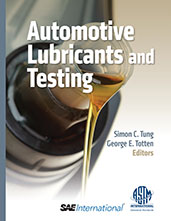Technical Paper
Discussions and Author Closures from the Symposium Entitled, “The Relationship Between Engine Oil Viscosity and Engine Performance - Part VI”
1980-10-01
801393
A symposium entitled: “The Relationship Between Engine Oil Viscosity and Engine Performance - Part VI” was held in Detroit, Michigan as part of the February 1980 SAE Congress and Exposition. Four of the papers presented at the symposium were bound in a booklet, SAE SP-460 and ASTM STP 621-S4. The discussions and author closures for these four papers as well as those for a paper presented in an earlier symposium are included in this paper and provide a supplement to the volume of bound papers.

